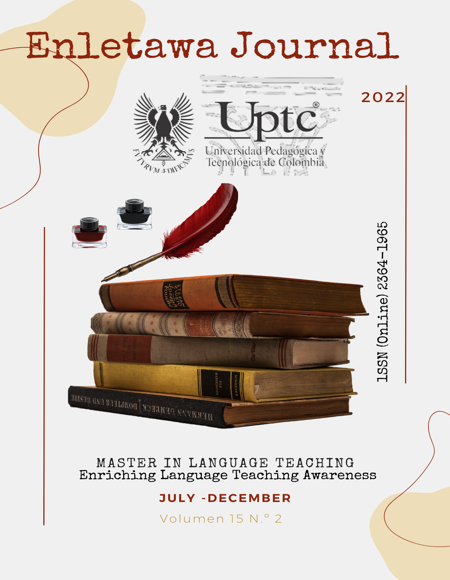The Use of Inclusive Language in the Speech of University Teachers and Students

Abstract
The aim of this mixed research was to analyze the attitude of teachers and students who belong to the Language School of the Universidad Veracruzana towards the use of inclusive language. It is considered that the language tends to reproduce a type of order when it comes to gender, in which women and people with different gender identities tend to be excluded. Thus, it was deemed appropriate to deepen in the current perspectives on inclusive language within a school community that is dedicated to study languages. A survey was administered and the results show contrasting opinions. There is a negative attitude among some of the participants that are reluctant to use inclusive language as they consider it irrelevant and a passing trend. However, there are some others who seem to have a rather open attitude, as they stated that inclusive language leads towards the reflection and the combination of multiple linguistic creations
Keywords
inclusive language, attitudes, genre
Author Biography
Glorisell Pichardo Nieves
Maestra en Enseñanza del inglés como lengua extranjera
Diana Iveth Sánchez Hernández
Maestra en Enseñanza del inglés como lengua extranjera, Universidad Veracruzana
References
- Bengoechea, M., y Simón, J. (2014). Attitudes of University Students to Some Verbal Anti-Sexist Forms. Open Journal of Modern Linguistics, 4, 69-90. https://doi.org/10.4236/ojml.2014.41008 DOI: https://doi.org/10.4236/ojml.2014.41008
- Bodine, A. (1999). Androcentrism in prescriptive grammar: Singular ‘they’, sex-indefinite ‘he’, and ‘he or she’. En D. Cameron (Ed.), The Feminist Critique of Language. A Reader (2.ª ed., pp. 124-138). Londres, Reino Unido/Nueva York, Estados Unidos: Routledge
- Bolívar, A. (2019). Una introducción al análisis crítico del “lenguaje inclusivo”. Literatura y Lingüística 40, 355-375. https://doi.org/10.29344/0717621X.40.2071 DOI: https://doi.org/10.29344/0717621X.40.2071
- Cabello Pino, M. (2020). Esbozo De Una Bibliografía Crítica Sobre -X- Y -E- Como Alternativas Al Masculino Genérico en Español (2014- 2019). Tonos Digital, 39, 1–25
- Carreño, S. (2020). ¿Por qué utilizar lenguaje inclusivo? Una perspectiva fenomenológica. Nomadías, 29, 237–255.
- Cremades, R.; y Fernández-Portero, I. (2022) Actitudes del alumnado universitario ante el lenguaje inclusivo y su debate en los medios de comunicación. Círculo de Lingüística Aplicada a la Comunicación (89), 89–115. https://doi.org/10.5209/clac.79503 DOI: https://doi.org/10.5209/clac.79503
- Ehrlich, S. (2004). Linguistic Discrimination and Violence against Women: Discursive Practices and Material Effects. En M. Bucholtz (Ed.), Language and Woman’s Place. Text and Commentaries (pp. 223-228). Oxford, Reino Unido: Oxford University Press.
- Furtado, V. (2013). El lenguaje inclusivo como política lingüística de género. Revista Digital de Políticas Lingüísticas, Vol. 5, pp. 48-70. http://repositorio.ciem.ucr.ac.cr/jspui/handle/123456789/247
- Gobierno de México, (2021) ¿Qué es el lenguaje incluyente y por qué es importante que lo uses? ¿Qué es el lenguaje incluyente y por qué es importante que lo uses? | Comisión Nacional para Prevenir y Erradicar la Violencia Contra las Mujeres | Gobierno | gob.mx (www.gob.mx)
- Gómez, C. N. (2020) Lenguaje inclusivo: una oportunidad para escarbar la superficie lingüística. Universidades públicas y derecho al conocimiento, Vol. 1 pp. 112-139.
- Hernández, S. R., Fernández C. C., & Baptista L. P. (2010). Metodología de la Investigación. Mac Graw Hill.
- Lakoff, R. (1975). Language and woman’s place. Oxford: Oxford University Press.
- Narvaja de Arnoux, E. y J. Del Valle (2010): Las representaciones ideológicas del lenguaje. Discurso glotopolítico y panhispanismo. Spanish in Context, v.7, n.1, 1-24 DOI: https://doi.org/10.1075/sic.7.1.01nar
- Núñez Cortés J. A., Núñez Román F., & Gómez Camacho A. (2021). Actitud y uso del lenguaje no sexista en la formación inicial docente. Profesorado, Revista De Currículum Y Formación Del Profesorado, 25(1), 45-65. https://doi.org/10.30827/profesorado.v25i1.13807 DOI: https://doi.org/10.30827/profesorado.v25i1.13807
- RAE, R. A. E. (2020). Resumen de la intervención del director de la RAE en la rueda de prensa celebrada el día 20 de enero de 2020 para presentar el informe sobre el lenguaje inclusivo en la Constitución. Boletín de Información Lingüística de la Real Academia Española, 14, 208-215
- Reales Gil, M. (2020). Análisis contrastivo de las actitudes hacia el lenguaje inclusivo en Argentina, España y México. [Tesis de Maestría, Universidad de Helsinki] https://helda.helsinki.fi/bitstream/handle/10138/319362/RealesGil_Maravillas_thesis_2020.pdf?sequence=2&isAllowed=
